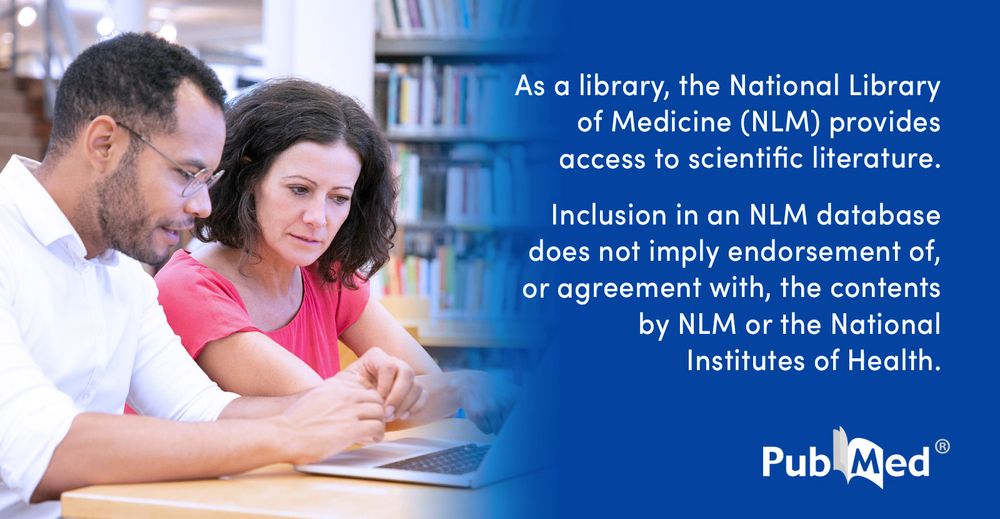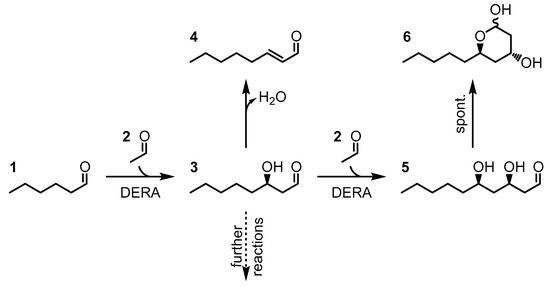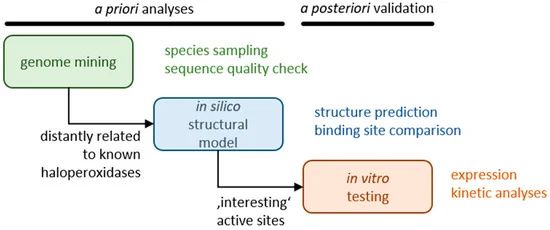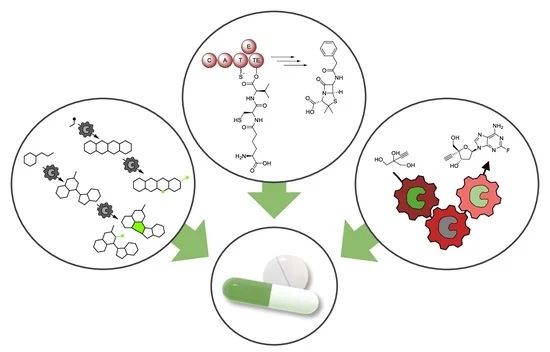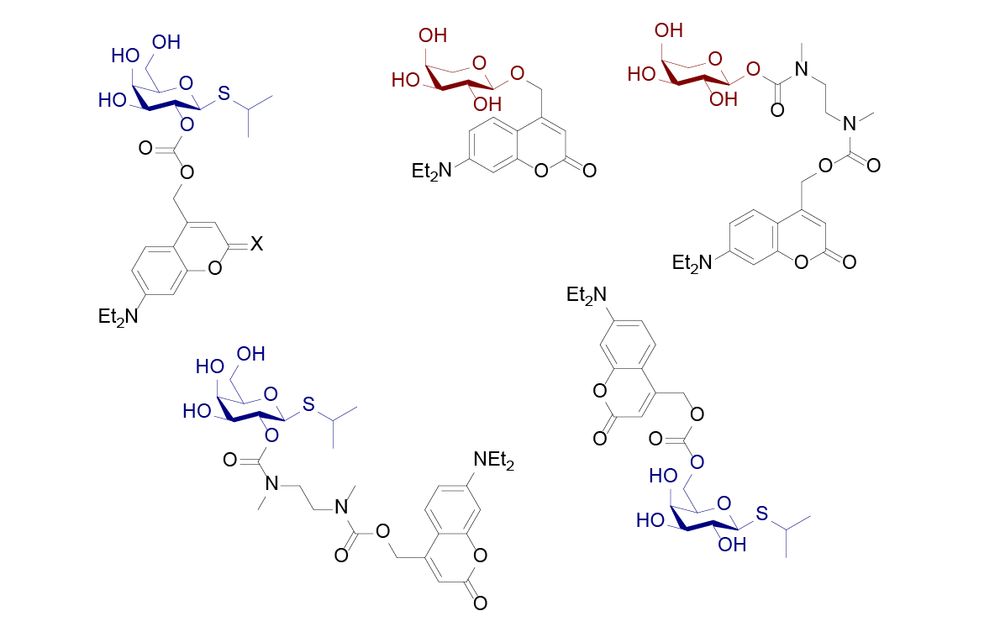
Congrats to Nina Stadler on her new paper in Green Chemistry! 🌱
Her work explores sustainable extraction of α-chaconine & α-solanine from potatoes using green solvents.
#GreenChemistry #Sustainability #NaturalProducts #Bioeconomy #Research
doi.org/10.1039/D5GC...
07.10.2025 10:00 — 👍 0 🔁 0 💬 0 📌 0

At the open day 2025 at @fz-juelich.de , our booth turned into a real kids’ lab: wearing lab coats & goggles, they extracted fragrances or pigments from plants 🌿🧪. Visitors also explored sustainability, chirality – and got a look behind the scenes in our lab tour.
#TagderNeugier #Naturstoffe
08.09.2025 10:07 — 👍 3 🔁 2 💬 0 📌 0
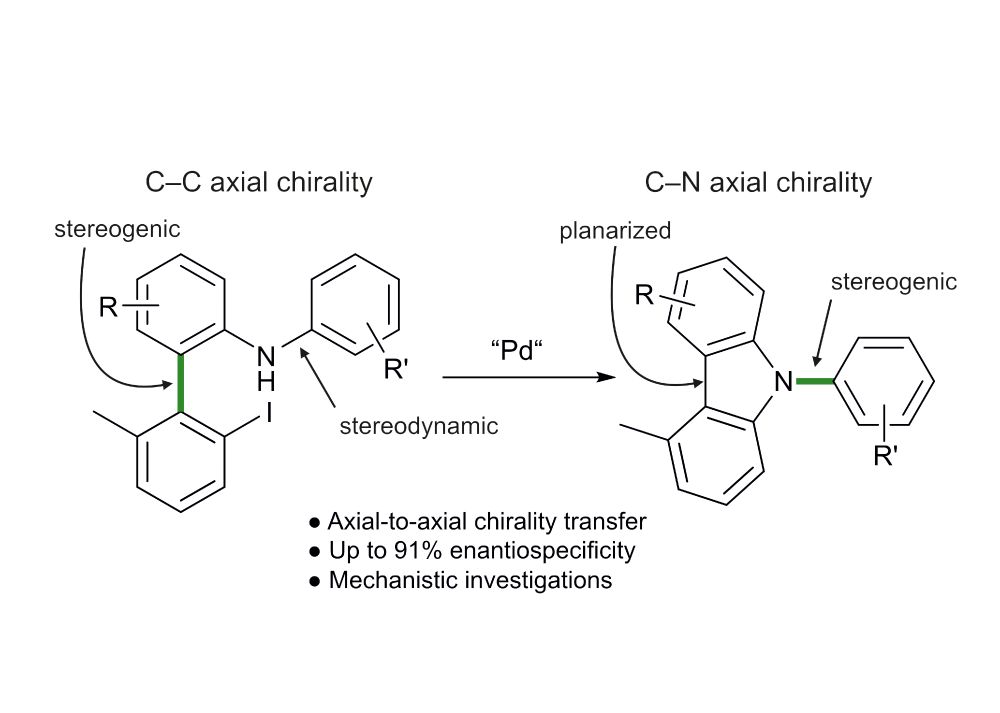
New paper by Sebastian Myllek et al. in Org. Biomol. Chem.:
C–N axially chiral carbazoles synthesized via axial-to-axial chirality transfer – up to 91% enantiospecificity! 👏
#AxialChirality #AsymmetricSynthesis #OrganicChemistry #OBCChem #Carbazoles
doi.org/10.1039/D5OB...
02.05.2025 08:28 — 👍 0 🔁 0 💬 0 📌 0
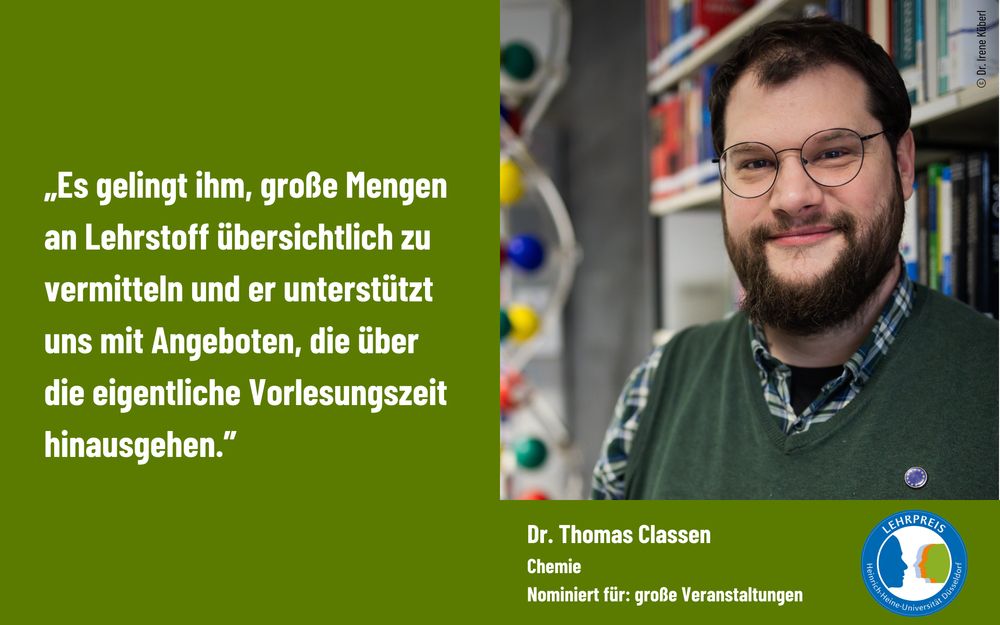
Studierende schrieben über Dr. Thomas Classen: „Es gelingt ihm, große Mengen an Lehrstoff übersichtlich zu vermitteln und er unterstützt uns mit Angeboten, die über die eigentliche Vorlesungszeit hinausgehen.“
Unser heutiger Nominierter des #hhuLehrpreis2025: Dr. Thomas Classen aus der Chemie @hhu.de
Studierende schwärmen von der Struktur seiner Veranstaltung und von seinem hohen Engagement. 👏🔬
17.03.2025 06:21 — 👍 13 🔁 5 💬 0 📌 0
Herzlichen Dank für die netten Willkommensgrüße @hhu.de 🙂👋
11.04.2025 09:48 — 👍 1 🔁 0 💬 0 📌 0
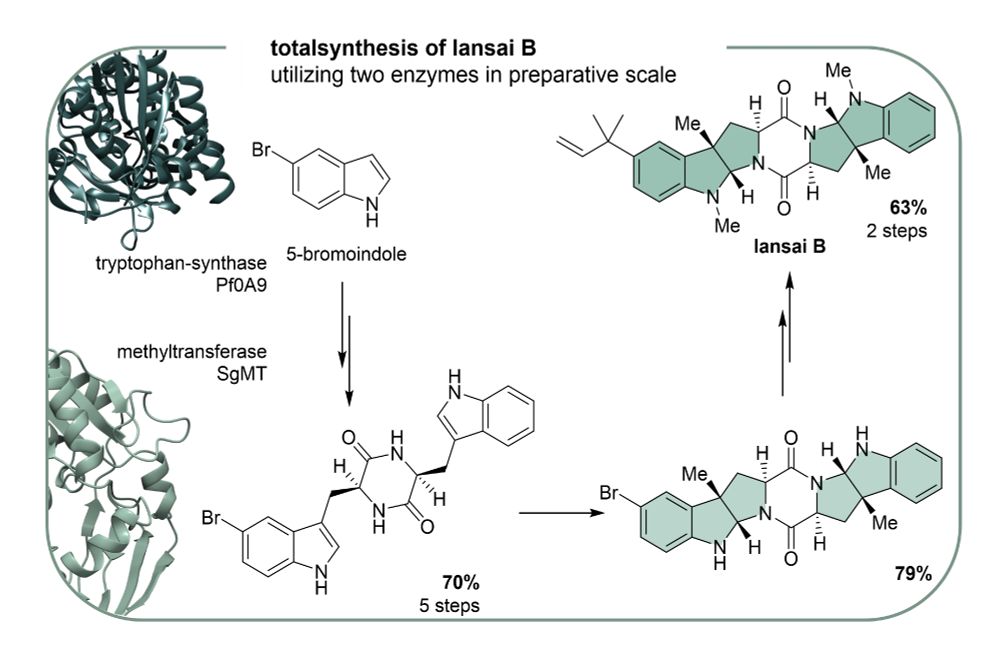
In Chemistry – A European Journal, Marcel Schatton and Mona Haase report the efficient total synthesis of Lansai B via a 6-step chemoenzymatic approach. Congrats to the whole team! 👏
doi.org/10.1002/chem...
#SyntheticChemistry #Biocatalysis #DrugDiscovery #IndoleChemistry #Naturstoffsynthese
11.04.2025 09:39 — 👍 4 🔁 0 💬 0 📌 0
We are happy to announce our latest publication in Organic Letters🥳: Application of Cyclic Diaryliodonium Salts in the Synthesis of Axially Chiral Natural Product Analogues | Organic Letters https://pubs.acs.org/doi/full/10.1021/acs.orglett.4c01308
25.06.2024 06:39 — 👍 1 🔁 0 💬 0 📌 0

Save the date! April 18, 3 p.m. Thomas Classen will unravel the magic of lupins in his talk (german) "Lupins: Flower magic with green added value" as part of the "Science online" series. #ScienceOnline #Lupins #Sustainability
🔍 More info & access: https://t.co/61mTwl7Mpe
01.04.2024 06:00 — 👍 0 🔁 0 💬 0 📌 0
Exciting news! 🎉 Our latest article introduces a cutting-edge method for High-Throughput Colorimetric Detection and Quantification of Indoles and Pyrroloindoles for enzymatic activity determination. Dive into the details here: https://t.co/QHAGyhA3hs
#EnzymeDetection
05.03.2024 09:16 — 👍 0 🔁 0 💬 0 📌 0
We are happy to share our new publication: "Application of the C3-Methyltransferase StspM1 for the Synthesis of the Natural Pyrroloindole Motif" | ACS Catalysis https://pubs.acs.org/doi/10.1021/acscatal.3c04952
05.01.2024 08:28 — 👍 0 🔁 0 💬 0 📌 0
We are very proud to share this VIP-article:
Atroposelective Total Synthesis of (+)‐Isokotanin A via Combined Metal and Enzyme Catalysis - Christine Ganardi - Advanced Synthesis & Catalysis - Wiley Online Library https://onlinelibrary.wiley.com/doi/full/10.1002/adsc.202300698
24.09.2023 08:25 — 👍 0 🔁 0 💬 0 📌 0
Moritz Weber developed a new copper ligand as part of his work. Due to its high solubility compared to commercially available ligands it opens up new possibilities to perform “Click”-chemistry. Congrats Moritz! http://www.thieme-connect.de/products/ejournals/abstract/10.1055/a-2034-9427
21.02.2023 07:08 — 👍 0 🔁 0 💬 0 📌 0
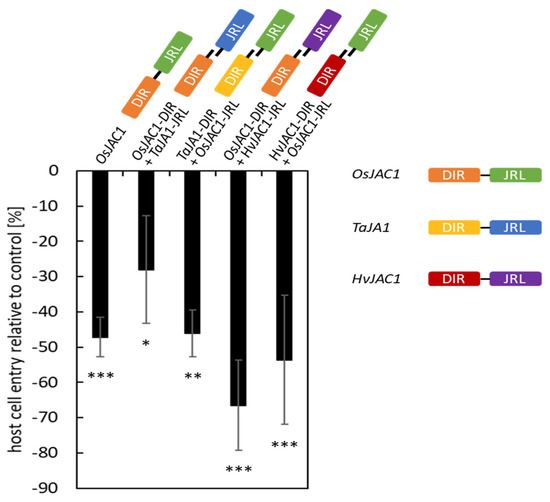
Pathogen Resistance Depending on Jacalin-Dirigent Chimeric Proteins Is Common among Poaceae but Absent in the Dicot Arabidopsis as Evidenced by Analysis of Homologous Single-Domain Proteins
MonocotJRLs are Poaceae-specific two-domain proteins that consist of a jacalin-related lectin (JRL) and a dirigent (DIR) domain which participate in multiple developmental processes, including disease resistance. For OsJAC1, a monocotJRL from rice, it has been confirmed that constitutive expression in transgenic rice or barley plants facilitates broad-spectrum disease resistance. In this process, both domains of OsJAC1 act cooperatively, as evidenced from experiments with artificially separated JRL- or DIR-domain-containing proteins. Interestingly, these chimeric proteins did not evolve in dicotyledonous plants. Instead, proteins with a single JRL domain, multiple JRL domains or JRL domains fused to domains other than DIR domains are present. In this study, we wanted to test if the cooperative function of JRL and DIR proteins leading to pathogen resistance was conserved in the dicotyledonous plant Arabidopsis thaliana. In Arabidopsis, we identified 50 JRL and 24 DIR proteins, respectively, from which seven single-domain JRL and two single-domain DIR candidates were selected. A single-cell transient gene expression assay in barley revealed that specific combinations of the Arabidopsis JRL and DIR candidates reduced the penetration success of barley powdery mildew. Strikingly, one of these pairs, AtJAX1 and AtDIR19, is encoded by genes located next to each other on chromosome one. However, when using natural variation and analyzing Arabidopsis ecotypes that express full-length or truncated versions of AtJAX1, the presence/absence of the full-length AtJAX1 protein could not be correlated with resistance to the powdery mildew fungus Golovinomyces orontii. Furthermore, an analysis of the additional JRL and DIR candidates in a bi-fluorescence complementation assay in Nicotiana benthamiana revealed no direct interaction of these JRL/DIR pairs. Since transgenic Arabidopsis plants expressing OsJAC1-GFP also did not show increased resistance to G. orontii, it was concluded that the resistance mediated by the synergistic activities of DIR and JRL proteins is specific for members of the Poaceae, at least regarding the resistance against powdery mildew. Arabidopsis lacks the essential components of the DIR-JRL-dependent resistance pathway.
Check out our new publication
Pathogen Resistance Depending on Jacalin-Dirigent Chimeric Proteins Is Common among Poaceae but Absent in the Dicot Arabidopsis as Evidenced by Analysis of Homologous Single-Domain Proteins https://www.mdpi.com/2024582 #mdpiplants via @Plants_MDPI
03.01.2023 08:34 — 👍 0 🔁 0 💬 0 📌 0
We are very proud to announce our next publication
@ACSCatalysis
Enzymatic C3-Methylation of Indoles Using Methyltransferase PsmD─Crystal Structure, Catalytic Mechanism, and Preparative Applications https://pubs.acs.org/doi/10.1021/acscatal.2c04240#.Y2TKzDFhsY8.twitter
04.11.2022 08:20 — 👍 0 🔁 0 💬 0 📌 0
Check out our article on @ChemCatChem Covalently Immobilized 2‐Deoxyribose‐5‐phosphate Aldolase (DERA) for Biocatalysis in Flow: Utilization of the 3‐Hydroxyaldehyde Intermediate in Reaction Cascades https://chemistry-europe.onlinelibrary.wiley.com/doi/10.1002/cctc.202200390#.YoOSzc-RwqY.twitter
17.05.2022 12:20 — 👍 0 🔁 0 💬 0 📌 0
Glad to share this great Cooperation with colleagues from IMET : Catalytically Active Inclusion Bodies─Benchmarking and Application in Flow Chemistry https://pubs.acs.org/doi/10.1021/acssynbio.2c00035#.YoOQhj6qL30.twitter
@krauss_ulrich
@ACSPublications
17.05.2022 12:13 — 👍 0 🔁 0 💬 0 📌 0
Check out our recent publication in Biotechnology Progress about a non-invasive method for optimizing the cultivation conditions of Pseudomonas putida KT2440 for the production of the natural product #prodigiosin.
https://aiche.onlinelibrary.wiley.com/doi/full/10.1002/btpr.3245
08.03.2022 08:19 — 👍 0 🔁 0 💬 0 📌 0
Herzlichen Glückwunsch an unseren lieben Kollegen Tom. Wir freuen uns unglaublich für dich! 🥳 https://x.com/SeLL_hhu/status/1463870102470856711
26.11.2021 13:51 — 👍 0 🔁 0 💬 0 📌 0
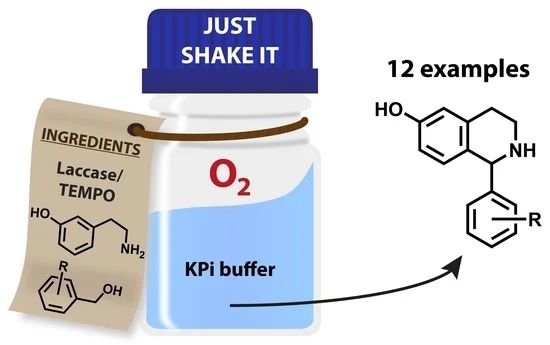
Chemoenzymatic One-Pot Process for the Synthesis of Tetrahydroisoquinolines
1,2,3,4-Tetrahydroisoquinolines form a valuable scaffold for a variety of bioactive secondary metabolites and commercial pharmaceuticals. Due to the harsh or complex conditions of the conventional chemical synthesis of this molecular motif, alternative mild reaction pathways are in demand. Here we present an easy-to-operate chemoenzymatic one-pot process for the synthesis of tetrahydroisoquinolines starting from benzylic alcohols and an amino alcohol. We initially demonstrate the oxidation of 12 benzylic alcohols by a laccase/TEMPO system to the corresponding aldehydes, which are subsequently integrated in a phosphate salt mediated Pictet–Spengler reaction with m-tyramine. The reaction conditions of both individual reactions were analyzed separately, adapted to each other, and a straightforward one-pot process was developed. This enables the production of 12 1,2,3,4-tetrahydroisoquinolines with yields of up to 87% with constant reaction conditions in phosphate buffer and common laboratory glass bottles without the supplementation of any additives.
Check out our new publication in @Catalysts_MDPI about the Chemoenzymatic One-Pot Process for the Synthesis of Tetrahydroisoquinolines
#hhu_de
#hhu_iboc
https://www.mdpi.com/2073-4344/11/11/1389
19.11.2021 15:00 — 👍 0 🔁 0 💬 0 📌 0
We are proud to share the recent publication of Patrick Ullrich. He reported about the allylation of N-unsubstituted Imins in a one-pot approach.
#HHU_de
#HHU_IBOC
https://chemistry-europe.onlinelibrary.wiley.com/doi/10.1002/ejoc.202101078
19.10.2021 13:11 — 👍 0 🔁 0 💬 0 📌 0
Bioinorganic #Chemsky Group of Lena Daumann @HHU.de PI tweeting. We love iron, rare earth elements, enzymes and bacteria!🧫 🧪 #fblockrocks www.bioac.hhu.de/
Mai Thi Nguyen-Kim + Terra X = MAITHINK X 🤓
Ab sofort wieder sonntags um 22:15 Uhr in ZDFneo und immer in der ZDF Mediathek
Impressum: http://ly.zdf.de/social/
We are interested in #enzmye #catalysis ... starting from #genome mining via enzyme studies towards #biocatalysis in all formats. Here the students tweet.
Deutschlands größte Wissenschaftsorganisation
Webseite: https://www.helmholtz.de
Mastodon: https://helmholtz.social/@helmholtz
Impressum: https://www.helmholtz.de/socialmedia
Offizieller Account des Zentrums für Informations- und Medientechnologie (ZIM) der Heinrich-Heine-Universität Düsseldorf
Die DECHEMA Gesellschaft für Chemische Technik und Biotechnologie e.V. führt Fachleute unterschiedlicher Disziplinen zusammen, um den wissenschaftlichen Austausch in chemischer Technik, Verfahrenstechnik und Biotechnologie zu fördern.
Die Deutsche Bundesstiftung Umwelt (DBU) ist eine der größten Stiftungen in Europa. Wir fördern innovative, modellhafte und lösungsorientierte Vorhaben zum Schutz der Umwelt.
Offizieller Kanal des UBA. Als Deutschlands zentrale Umweltbehörde kümmern wir uns darum, dass es in Deutschland eine gesunde Umwelt gibt, in der Menschen so weit wie möglich vor schädlichen Umwelteinwirkungen geschützt leben können. 🌱
Offizieller Kanal der Gesellschaft Deutscher Chemiker (GDCh). Hier schreibt die GDCh-Öffentlichkeitsarbeit. #chemsky http://gdch.de/impressum.html
Channel of the German Chemical Society (GDCh)
Die Organisation der Wissenschaft für Wissenschaftskommunikation in Deutschland. #Wisskomm
https://wissenschaft-im-dialog.de/service/datenschutz/
With the future of the world in the balance, everyone has a role to play in making it better. How will you join in?
🌐 Website: www.rsc.org
German scientific society for all those interested in biochemistry, molecular biology, biomedicine, biotechnology, cell biology, genetics...
Boehringer Ingelheim | Chemical Development | Biocatalysis
HTE, process optimization, digital tools, enzyme engineering
PhD student in Chemical Biology at University of Zurich @UZH @LOCBP
Juniorprof für Philosophie der Technik & Information, Uni Stuttgart
Mitinitiatorin von #IchBinHanna | https://amreibahr.net | Newsletter #ArbeitInDerWiss: https://steady.page/de/arbeit-in-der-wissenschaft/ | #Top40unter40
☕️ #TeamKaffee | 🏃🏻♀️ #TeamLaufen
🇨🇦 O.C., University Professor and Chair of Chemistry, sometimes Opinion writer, always opinionated, citizenship ceremony presiding officer. Come for the food, travel and outdoors stories, stay for the chemistry.
Chemistry Europe is an association of 16 chemical societies from 15 European countries. We publish a family of high-quality scholarly chemistry journals.
https://chemistry-europe.onlinelibrary.wiley.com/









